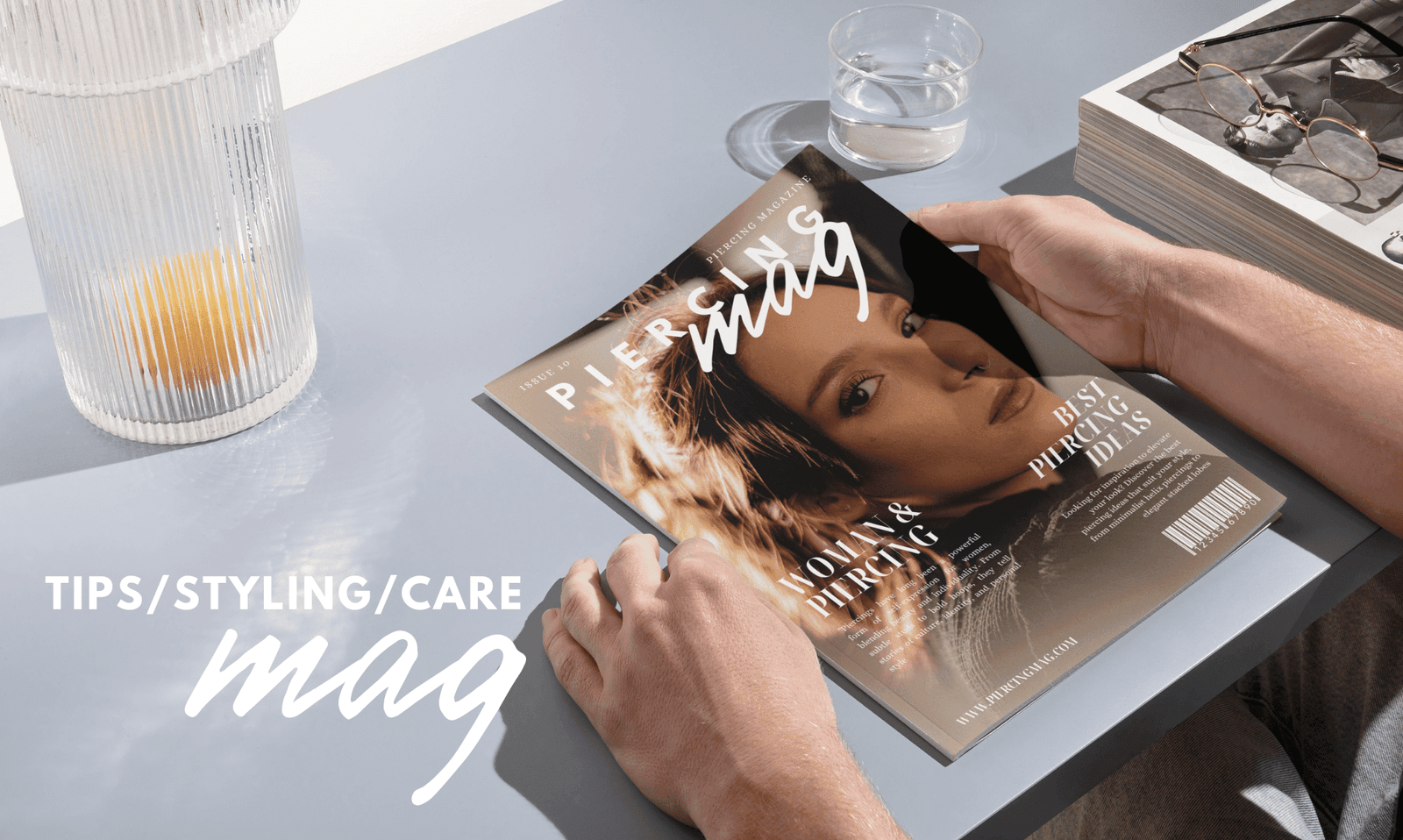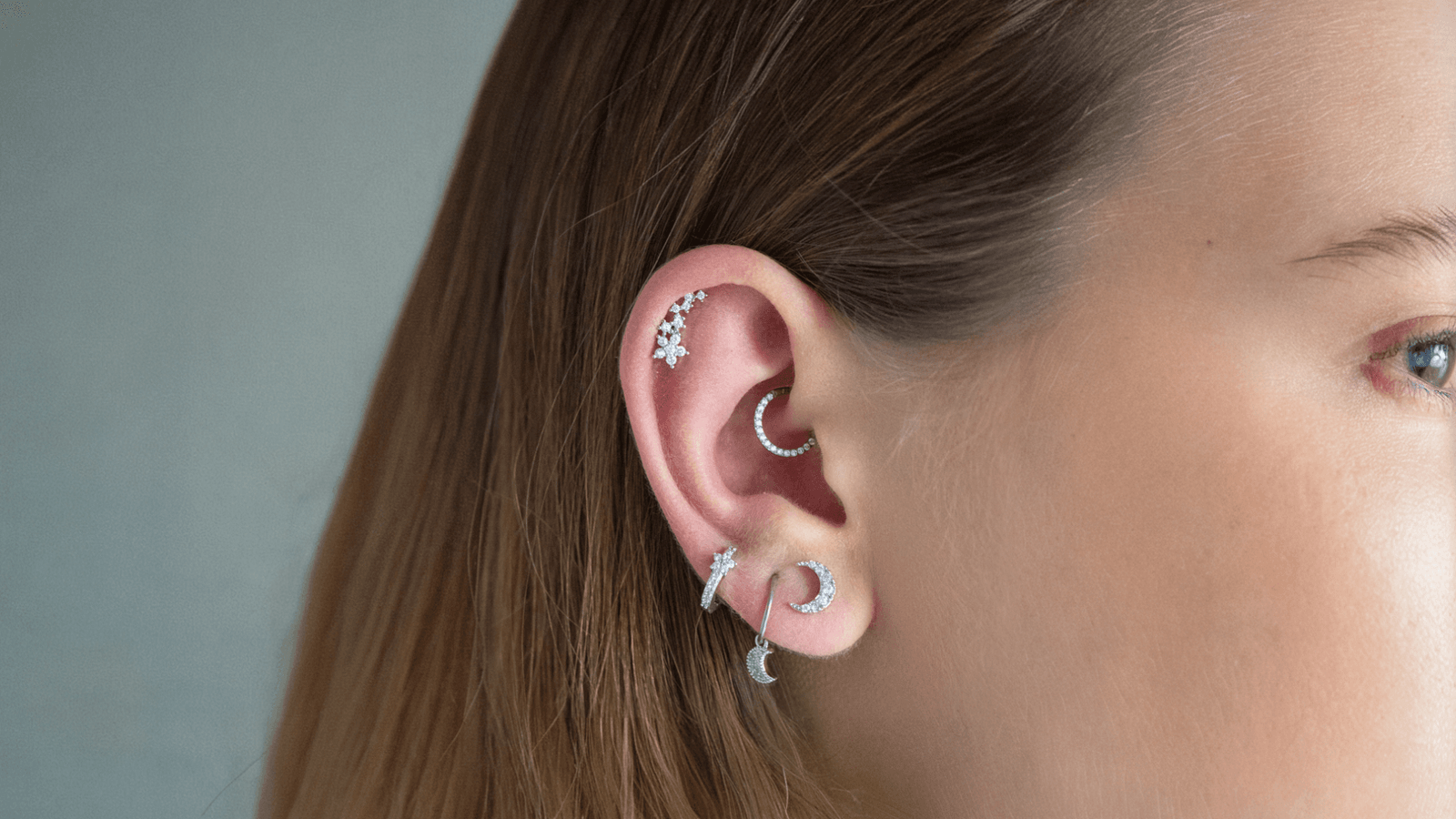Cartilage piercings are a stylish way to elevate your ear game, offering endless possibilities for customization. Whether you’re considering your first cartilage piercing or adding to your curated ear, understanding the pain level, healing process, jewelry choices, and aftercare is essential.
In this guide, we’ll cover everything you need to know before getting a cartilage piercing!
1️⃣ What Is a Cartilage Piercing?
📍 Location: Any piercing done in the harder cartilage areas of the ear, excluding the soft lobe.
💎 Why It’s Popular:
✔️ Adds depth and style to any ear look.
✔️ Many placement options for unique combinations.
✔️ Works well with studs, hoops, rings, and clickers.
📌 Common Types of Cartilage Piercings:
🔹 Helix Piercing: Upper outer rim of the ear.
🔹 Forward Helix Piercing: Front part of the helix, near the face.
🔹 Tragus Piercing: Small flap of cartilage in front of the ear canal.
🔹 Conch Piercing: Middle ear cartilage, great for hoops.
🔹 Daith Piercing: Inner fold of cartilage, rumored to help migraines.
🔹 Rook Piercing: Fold above the daith, edgy and unique.
🔹 Flat Piercing: On the flat part of the upper ear, great for studs.
2️⃣ How Painful Is a Cartilage Piercing?
😖 Pain Level: Moderate (4-7/10)
- Cartilage piercings are more painful than lobe piercings due to the dense tissue.
- The pain is usually sharp at first, followed by pressure.
- Some areas hurt more than others (e.g., rook and daith are more painful than a standard helix).
💡 Piercing Tip:
✔️ Always go to a professional piercer who uses a needle, not a gun.
3️⃣ Healing Time & Aftercare
⏳ Healing Time: 6 months to 1 year, depending on the placement.
📌 How to Care for Your Cartilage Piercing:
✅ Clean twice daily with a sterile saline solution.
✅ Avoid touching, twisting, or sleeping on the piercing.
✅ Keep hair, headphones, and hats away from the area.
✅ Stick to hypoallergenic jewelry like 14K Gold or Titanium.
🚨 What to Avoid:
❌ Swimming in pools or the ocean – Bacteria can cause infections.
❌ Using alcohol or hydrogen peroxide – These dry out and irritate the piercing.
❌ Changing jewelry too soon – Wait at least 6 months before switching styles.
4️⃣ Best Jewelry for Cartilage Piercings
💍 Recommended Jewelry Styles:
✔️ Flat-Back Studs: Ideal for healing and comfortable wear.
✔️ Hoops & Rings: Perfect for conch, helix, and daith piercings.
✔️ Clickers & Captive Bead Rings: Secure and stylish for cartilage piercings.
✨ Best Jewelry Materials:
✔️ 14K Gold – Hypoallergenic and stylish.
✔️ Titanium – Lightweight and biocompatible, great for sensitive skin.
5️⃣ Common Cartilage Piercing Issues & How to Prevent Them
🚨 Possible Complications:
❌ Infections – Usually caused by bacteria or poor aftercare.
❌ Irritation Bumps – Can develop from movement or low-quality jewelry.
❌ Swelling or Pain – Normal at first but should gradually improve.
🛑 How to Avoid Problems:
✔️ Stick to high-quality jewelry (gold or titanium).
✔️ Be patient—cartilage piercings take longer to heal.
✔️ Follow a strict aftercare routine.
6️⃣ Cartilage Piercing vs. Lobe Piercing: Key Differences
| Feature | Cartilage Piercing | Lobe Piercing |
|---|---|---|
| 📍 Location | Hard cartilage areas of the ear | Soft, fleshy lower ear |
| 😖 Pain Level | Moderate (4-7/10) | Low (1-2/10) |
| ⏳ Healing Time | 6-12 months | 6-8 weeks |
| 💍 Best Jewelry | Studs, hoops, rings | Studs, hoops, huggies |
| 🔥 Ideal For | Trendy, curated ear looks | Beginners, everyday wear |
💡 Which One Should You Get?
✔️ If you want a quick-healing, low-pain piercing, go for a lobe piercing.
✔️ If you love stacked piercings and trendy styles, try a cartilage piercing.
7️⃣ Is a Cartilage Piercing Right for You?
✔️ Get one if…
✅ You want a bold, stylish ear piercing.
✅ You love layered ear stacks and unique jewelry.
✅ You’re okay with a longer healing time.
❌ Think twice if…
🚫 You have low pain tolerance.
🚫 You frequently wear over-ear headphones.
🚫 You can’t commit to strict aftercare.
A cartilage piercing is one of the best ways to personalize your ear styling. Whether you choose a helix, conch, tragus, or rook piercing, proper aftercare and high-quality jewelry will ensure a smooth healing process.
💬 Do you have a cartilage piercing? Tell us your favorite jewelry style in the comments!




Leave a Reply